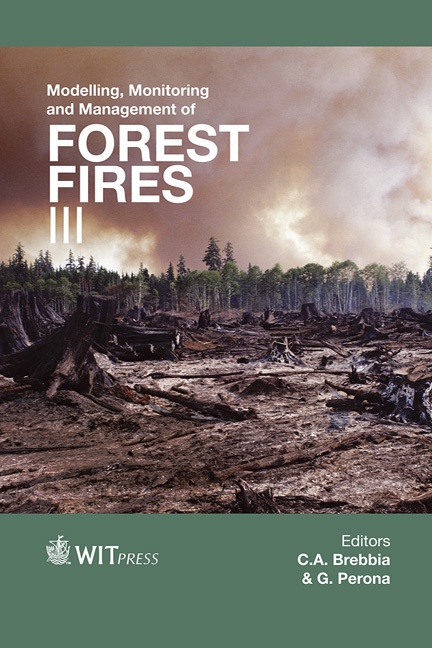Intelligent Wireless Sensor Network For Wildfire Detection
Price
Free (open access)
Transaction
Volume
158
Pages
12
Page Range
137 - 148
Published
2012
Size
1,322 kb
Paper DOI
10.2495/FIVA120121
Copyright
WIT Press
Author(s)
A. Ko, N. M. Y. Lee, R. P. S. Sham, C. M. So & S. C. F. Kwok
Abstract
Applications of Wireless Sensor Network (WSN) can be found anywhere from small manufacturing plants to major military operations. The inherited scalability and robustness of WSN make them an indispensible component in systems designed to monitor and communicate field data over large areas. While rural fire detection systems can most certainly benefit from these innate features of WSN, there are various technical difficulties to overcome to fully utilize this technology. This paper describes an intelligent wildfire detection system that can be deployed to a station in the middle of rural forests to monitor abnormal heat occurrences and report to duty officers outside of the forest through the internet or satellite. The intelligent wildfire detection system consists of thermal cameras and WSN can analyse feedback from the two sources to minimize false alarm rate without scarifying reliability. The system has been developed into prototype and installed in Guangdong, China. The system has obtained success in a largescale field test in partnership with the Guangdong Academy of Forestry. After the final evaluation by Provincial Departments in April, the system will be officially adopted by the Guangdong Province and be widely deployed in the province. The purpose of this paper is to present the technical design of the system as well as challenges in the integration and administration of advanced technology in a traditionally human-based, labour-intense system. Keywords: wildfire detection, search and rescue robots, wireless sensor networks, computer vision, environmental protection, thermal camera, artificial intelligence.
Keywords
wildfire detection, search and rescue robots, wireless sensor networks, computer vision, environmental protection, thermal camera, artificial intelligence.





